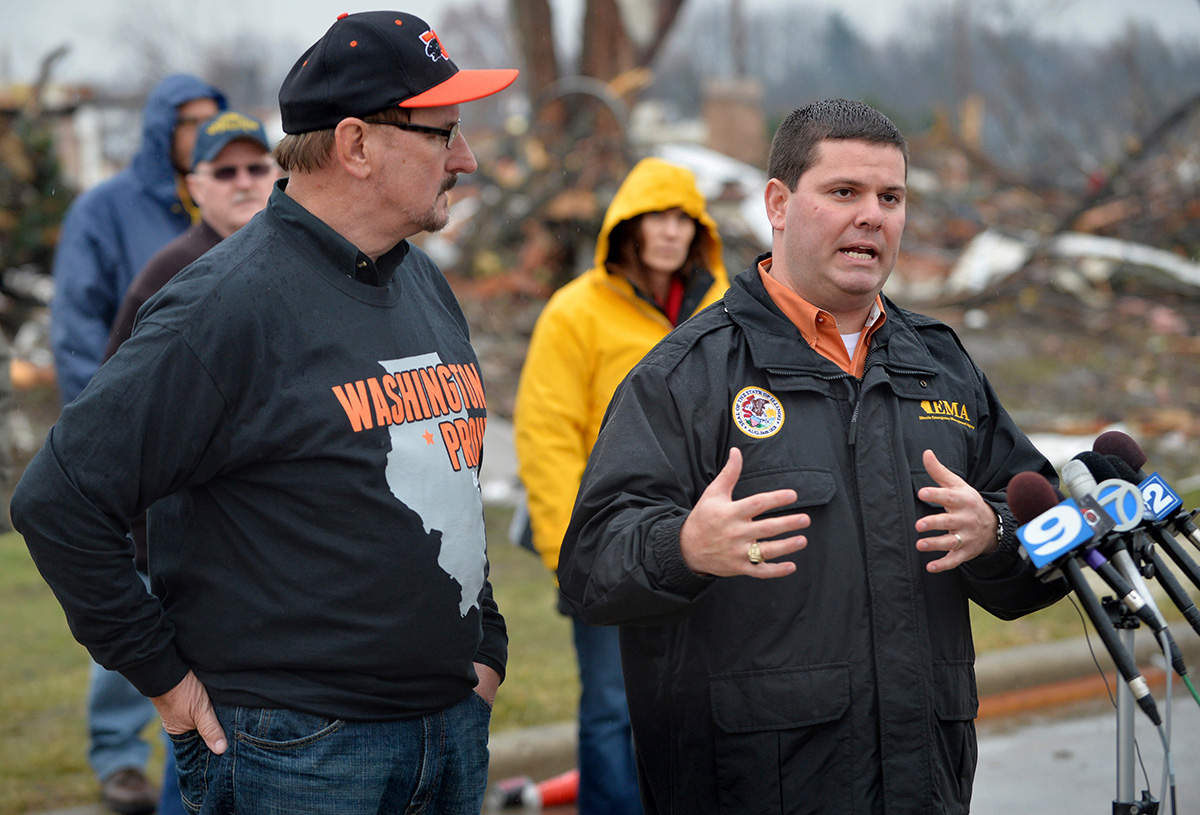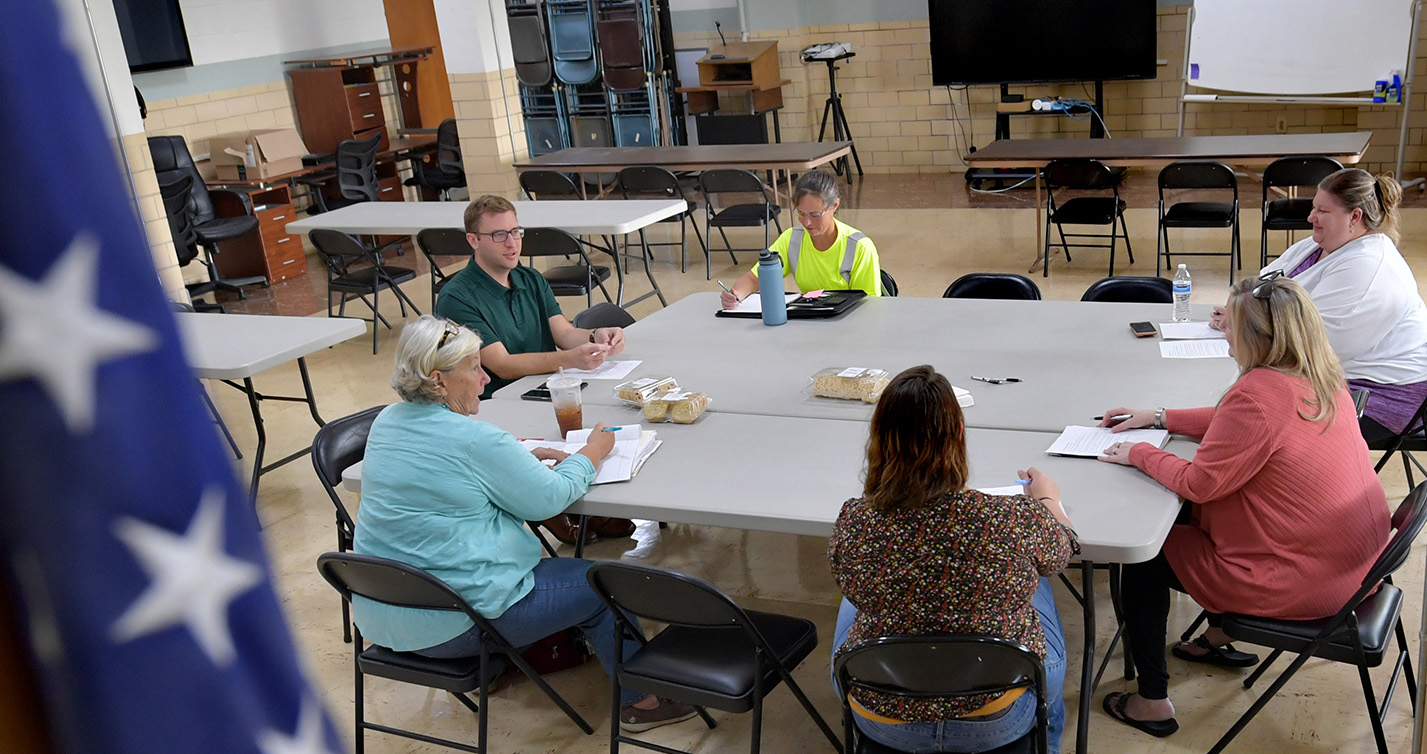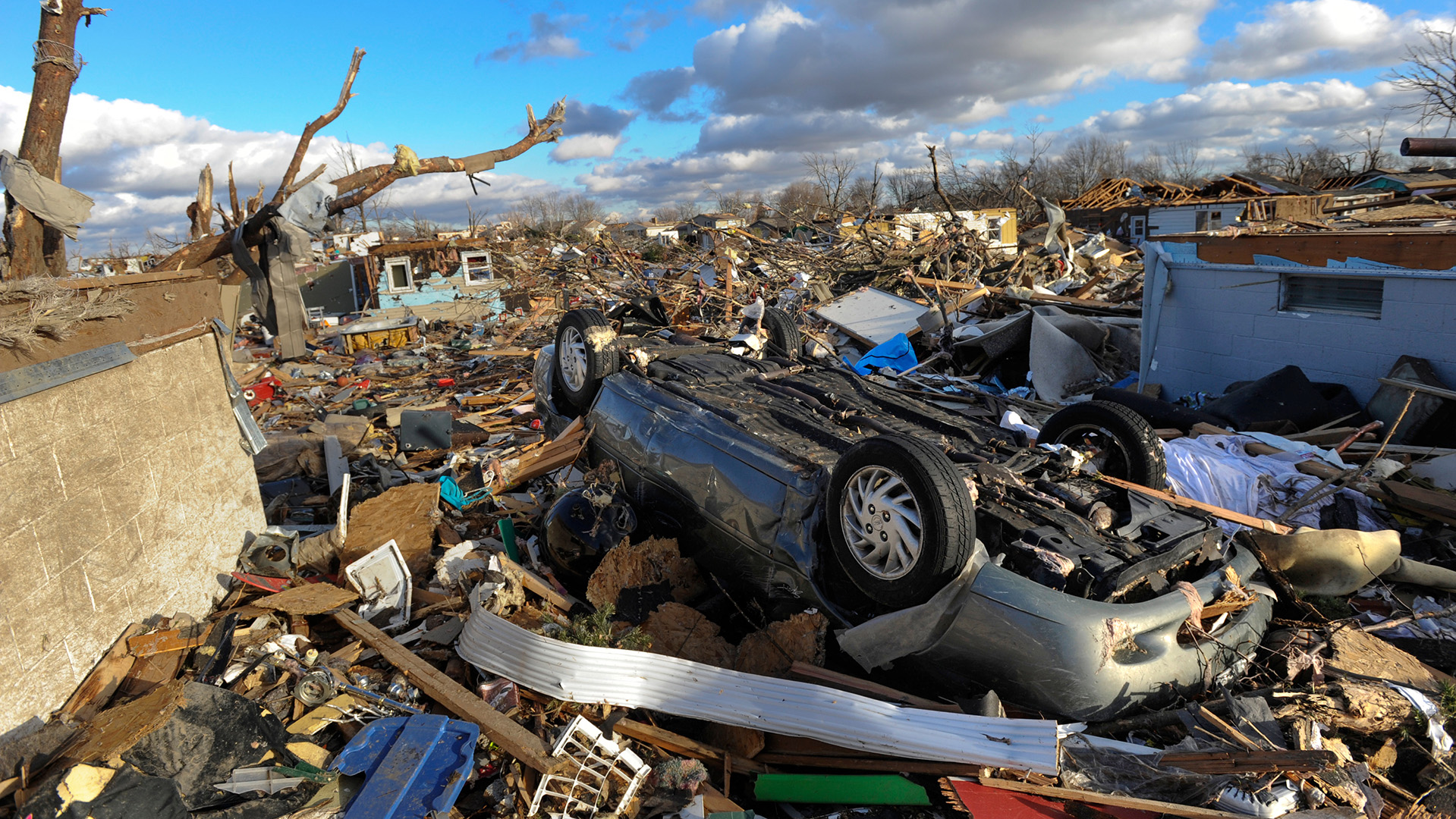On that fateful day, an EF-4 tornado struck central Illinois, and 10 years later, survivors recount the harrowing tale
Jessica Uftring and her sons headed to church that morning while her husband, Grant, stayed home to get ready for the Bears game later that day. When he saw the funnel cloud off to the west, he ran to the basement, hovering under the couch he had flipped over. After he heard what sounded like a train and debris hitting their house, all went quiet. He came to the stairs and saw daylight above. Not a wall was standing. Their car had been blown up against the neighbor’s house.
The next time Jessica saw Grant, he was standing at the back of the church soaking wet in just his sweats and stocking feet. He had just run more than two miles to get to his family.
As he hugged his wife and sons, Jessica said she wanted to go home. Grant responded: “Jess, we don’t have a home. Our house is gone, our neighborhood is gone, half the town is gone.”
Stories like this one happened many times that eventful day, Nov. 17, 2013. Despite the tragic evidence that lay all around them, many residents of Washington found themselves saying how lucky they felt. There were only three deaths as a result of the EF-4 tornado, which at one point reached a half-mile wide, even though 1,000 homes were damaged or destroyed along with seven businesses, seven apartment buildings and 2,500 vehicles. There were several communities in the area that were affected, including Pekin and East Peoria, but Washington took the brunt of the damage that fateful Sunday.
Ten years later, Brian Gorsich claims that multiple sclerosis saved his life that day. He was in bed resting and his wife was at work. As he looked out his bedroom window facing east, he saw clear sky but could hear the wind. As he slowly made his way to the front of the house, he was picked up and tossed around in the hallway. He woke up to blue sky overhead.
The next day, a man in a yellow safety vest came along with about 50 people to “pick up the pieces of our lives,” recalled Gorsich, who gives a great deal of credit to the many faith-based organizations from all over the country that came to help. “I had people from New Jersey and California in my yard.”


Responding to the unprecedented
The angels of mercy were many. Team Rubicon, a national non-profit, came prepared to do demolitions and remove debris. Caterpillar, Inc. provided many of the machines its volunteers used. The Salvation Army and American Red Cross were ever-present. Financial support came from the Chicago Bears. Musical groups Styx and REO Speedwagon, as well as many restaurants, businesses and big corporations such as Nissan all stepped up.
Gary Manier, then as now the mayor of Washington, recalls seeing Peoria Police officers in town as he made his way to City Hall that day. He later found out that Peoria City Mayor Jim Ardis had sent them. The home of Ardis’s mother-in-law had been destroyed. As he arrived at her home following the storm, he found her sitting next to the front door, which was attached to the only wall in the house left standing.
During that first post-tornado week, the city hosted three meetings daily at a command center that included key people from organizations such as Tazewell County EMA, Ameren, police and fire departments, as well as other agencies. Nine town hall meetings were held to keep people informed and assist with insurance issues and other problems. Manier said that one important lesson local residents have learned is to pay attention to the tornado sirens.
Schools and businesses were not severely affected, for the most part, with the exception of Hillcrest Golf Course and the Uftring car dealership, where more than 300 cars were damaged. Besides a portion of a roof being destroyed, every one of the approximately 30 churches in town remained intact. Donations of clothing, food, water and other essentials came in by the truckload, with local churches working hard to ensure these items got to those who needed them.
What a mess
The cleanup following a storm of this magnitude was nothing if not formidable, with parts of buildings and their contents, vehicles, trees and everything imaginable strewn all over town. What do you do with all of the debris? What about items you find that you know may be of value to someone but you have no idea whom they belong to?
People were told to put debris at the curb. Waste Management kept the landfill open so garbage could be dumped at any time. With winter coming soon, it was important to get everything cleaned up. There were people with open land who volunteered to allow dumping on their property just to have a place to put the trees, building materials and other debris. Meanwhile, Ameren worked diligently to restore power and make everything safe.
Photos were taken of found items and placed on the web for residents to search; many of them were reunited with their owners. Hundreds of personal possessions were held for almost five years. Besides photos and other papers, there was a family Bible and a wedding dress among other precious items.
Important papers, documents and photographs were found as far away as Chicago. Ralph Koonce’s military papers were found on a fence post near Midway Airport. He was one of the people who died as a result of injuries he received during the tornado.
Getting the community’s act together
Several groups were born out of the need to organize recovery assistance. One, Long Term Recovery (LTR), was composed of about 100 volunteers from various churches, civic and other organizations to provide assistance from the more than $1.5 million that had been donated from all over the country. Some 1,100 people received help, from the purchase of washing machines to tree removal, said LTR leader Jim Fassino. Terry Bibo Knight, with her media connections as a former Journal Star reporter, was instrumental in getting the word out to those in need.
Dawn Cook, director of the Emergency Management Agency in Tazewell County, was involved in taking care of storm victims and has continued to advocate for preparedness against natural disasters. Spotters are now in place to report to the National Weather Service, and 52 volunteers are at the ready to do search and rescue following weather emergencies.
Another organizational offspring of the 2013 tornado is Community Organizations Active in a Disaster, or COAD, composed of the likes of the Tazewell County EMA, Ameren, Salvation Army, Rubicon, Red Cross, churches, Lions Clubs and Peoria Humane Society. Its goal is to be able to coordinate mass care, donations and volunteer management, and offer assistance in any disaster by supporting first responders. With representatives from Tazewell, Peoria and Woodford counties, the group meets quarterly.
When asked how the community has changed since Nov. 17, 2013, many Washingtonians noted that they have learned how to ask for help when they need it. One message came through loud and clear: People are grateful to live in a community that has become closer and stronger than ever.





